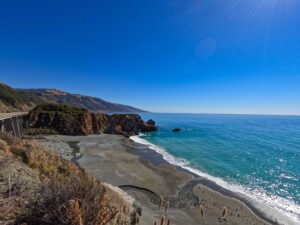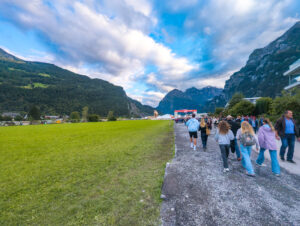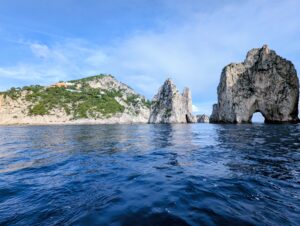Overview: This segment of the West Coast road trip chronicles the departure from the San Francisco Bay Area, heading north along California’s rugged coastline. It details experiences at Point Reyes National Seashore, known for its dramatic landscapes and diverse wildlife, and Sonoma Coast State Park, highlighting coastal drives at sunrise and sunset. The journey culminates in the awe-inspiring presence of ancient giants within Humboldt Redwoods State Park and a brief encounter with Redwood National Park, home to the world’s tallest trees. This post serves as a guide to these locations, offering insights into their natural and historical significance.
Day 4 (continuation of this blog): Tuesday – Point Reyes Peninsula: Wildlife and Windswept Coasts
- Route: North from Mount Tamalpais along Highway 1.
- Key Locations Visited: Point Reyes National Seashore (specifically the State Marine Conservation Area).
- Wildlife Encounters: Male and female Black-tailed Deer (Odocoileus hemionus columbianus), Coyote (Canis latrans), California Sea Lions (Zalophus californianus).
- Overnight Location: Public parking area near a beach, adjacent to Sonoma Coast State Park.
Having absorbed the panoramic grandeur from Mount Tamalpais, the journey continued northward, tracing the iconic Highway 1. The first major destination was the Point Reyes National Seashore. This 71,000-acre preserve is a realm of dramatic cliffs, expansive beaches, and vital estuaries, managed by the National Park Service. The weather was characteristically coastal Californian: bright sunshine accompanied by a formidable, persistent wind sweeping in from the Pacific.
The wildlife encounters here were immediate and remarkable. A majestic buck and a doe, likely Black-tailed Deer, grazed peacefully a mere 10 meters away, their calm demeanor a testament to the protected nature of the area. Shortly after, a coyote, slender and alert, trotted past at an even closer distance of approximately 5 meters, offering a fleeting glance before continuing its patrol. Down on the shoreline and on offshore rocks, the barks of California Sea Lions echoed, their dark forms visible as they basked and socialized. These close encounters underscored the richness of the coastal ecosystem.
Deep Dive: Point Reyes National Seashore
- Geological Uniqueness: Point Reyes is a fascinating geological anomaly. The peninsula is part of the Salinian Block, a granitic landmass that is entirely separate from the Franciscan Complex bedrock of mainland California. This block is being transported northwestward along the San Andreas Fault system, which runs directly through Tomales Bay, separating the peninsula from the mainland. Essentially, Point Reyes is a piece of the Sierra Nevada mountains that has traveled hundreds of miles. The famous Point Reyes Lighthouse (not visited on this occasion, but a key feature) is perched on these granite cliffs.
- Historical Tapestry: The land has been home to the Coast Miwok people for thousands of years. European history here is often marked by Sir Francis Drake’s reputed landing in 1579 (Drake’s Bay). Later, the peninsula became a significant dairy farming region in the 19th and early 20th centuries, supplying San Francisco with butter and cheese; some of these historic ranches are still operational or preserved.
- Conservation Significance: Established in 1962, the Seashore protects incredible biodiversity. The Point Reyes State Marine Reserve and Point Reyes State Marine Conservation Area (where I was) are part of a network of Marine Protected Areas (MPAs) crucial for safeguarding marine life, including various fish species, marine mammals, and seabirds. The reintroduction of Tule Elk (Cervus canadensis nannodes) to the Tomales Point Elk Reserve is a major conservation success story.
- Visitor Experience: Annually, over 2.5 million people visit Point Reyes for hiking (over 150 miles of trails), wildlife viewing, kayaking, birdwatching (it’s on the Pacific Flyway), and exploring historic sites like the lighthouse and Pierce Point Ranch. The Bear Valley Visitor Center is an excellent starting point for information.
As dusk approached, a secluded public parking spot near a beach adjacent to Sonoma Coast State Park provided a tranquil, solitary location for the night. I settled in around 8:45 PM, after a slow, meditative drive along the coast as the sun dipped below the horizon. These crepuscular drives are a personal highlight: the landscapes are bathed in ethereal reddish light, the roads are typically empty, offering an intimate experience with nature, and wildlife activity peaks. An early start was planned to greet the sunrise.



























Day 5: Wednesday – Sonoma Sunrises and the Avenue of Giants
- Key Locations Visited: Sonoma Coast State Park, Black Point Beach, Humboldt Redwoods State Park (Avenue of the Giants), Redwood National Park.
- Wildlife Encounters: Black-tailed Deer.
- Activities: Coastal driving, short hikes in redwood forests.
- Overnight Location: Rest Area next to highway
The 5:00 AM alarm was rewarded with a spectacular sunrise over the Pacific. The first stop within Sonoma Coast State Park offered a quintessential coastal California scene: on one side, the ocean awakening under a pastel sky; on the other, a deer standing serenely against the fiery backdrop of the sunrise – a moment of pure tranquility.
Deep Dive: Sonoma Coast State Park
- A Coastal Mosaic: This park is not a single entity but a 17-mile stretch of varied coastline, encompassing numerous beaches, coves, rugged headlands, and sea stacks. Notable features include Goat Rock Beach (known for its large sea stack and seal colony), Shell Beach (tide pooling), and Bodega Head (whale watching).
- Natural Features & Hazards: The park is characterized by dramatic cliffs, secluded sandy coves, and impressive rock formations like Arches Rock. The Kortum Trail and Pomo Canyon Trail offer excellent bluff-top hiking. Visitors should be aware of the powerful surf, sneaker waves, and strong rip currents common along this coastline.
- Biodiversity & Ecology: The park protects vital coastal habitats, including coastal prairie, dunes, and marine environments. It’s an important area for migrating whales (gray whales primarily, December-April), harbor seals, sea lions, and a multitude of seabirds and shorebirds. The Russian River empties into the Pacific within the park boundaries, creating a rich estuarine environment.
The day was defined by unhurried driving, consistently choosing the route closest to the ocean. This slower pace allowed for numerous spontaneous explorations. At Black Point Beach, an encounter with an elderly local yielded a valuable tip: a hidden patch of wildflowers, only in peak bloom for a few weeks each year, lay just over a nearby hill. The short detour was richly rewarded with a vibrant floral display.
The journey then led inland to the legendary Humboldt Redwoods State Park. The Avenue of the Giants, a 31-mile scenic alternative to Highway 101, is the quintessential redwood experience. This road meanders directly through magnificent groves of old-growth Coast Redwoods (Sequoia sempervirens). The relative quiet of the park on this day allowed for a very slow drive, truly absorbing the scale and majesty of these ancient trees. Several short hikes were undertaken, stepping into the cool, dim, and profoundly still atmosphere of the forest floor. The feeling of driving on a road flanked by trunks as wide as the car itself is deeply humbling, shrinking one’s perspective and inviting quiet contemplation.
Deep Dive: Humboldt Redwoods State Park & Avenue of the Giants
- Heart of the Redwood Empire: The park protects over 53,000 acres, including approximately 17,000 acres of old-growth redwood forest – the largest remaining contiguous old-growth redwood forest in the world. Many trees here are over 2,000 years old and exceed 350 feet in height.
- The Save the Redwoods League: The park’s existence is largely due to the efforts of the Save the Redwoods League, founded in 1918, which began purchasing groves to protect them from logging. The Rockefeller Forest within the park is one of the finest examples of an alluvial-flat redwood forest.
- Avenue of the Giants Highlights: This historic route offers numerous points of interest, including visitor centers (the main one is near Weott), trailheads leading to groves like Founders Grove (home to the fallen Dyerville Giant, which was once over 370 feet tall), and opportunities to simply be dwarfed by the trees. While “drive-thru” trees exist in the region, they are typically on private land and are a legacy of an earlier tourism era.
- Ecosystem & Climate: The redwood forest thrives in a specific coastal climate characterized by winter rains and summer fog, which provides crucial moisture during the dry season. This unique ecosystem supports a variety of other plant and animal life adapted to the shaded, moist conditions.
Later, the route returned to the coast to Redwood National Park, a significant milestone. This visit was more of a brief passage. Redwood National Park, in cooperation with California’s Jedediah Smith, Del Norte Coast, and Prairie Creek Redwoods State Parks (collectively managed as Redwood National and State Parks – RNSP), protects nearly half of all remaining old-growth Coast Redwoods. While these parks are home to the world’s tallest known living trees, including Hyperion (approximately 380 feet), the visual difference in height compared to the giants in Humboldt Redwoods is often imperceptible to the casual observer – all are simply, overwhelmingly, colossal.
Deep Dive: Redwood National and State Parks (RNSP)
- A Collaborative Effort: The unique federal and state partnership (formalized in 1994) allows for coordinated management and protection of these invaluable ecosystems.
- World Heritage Status: RNSP is a UNESCO World Heritage Site and an International Biosphere Reserve, recognized for its exceptional natural beauty, the significance of its redwood forests, and the rich biodiversity it supports.
- Beyond the Giants: While famous for the redwoods, RNSP also protects vast prairies (like the Bald Hills), oak woodlands, wild and scenic riverways (including the Smith River, Klamath River, and Redwood Creek), and nearly 40 miles of rugged, undeveloped coastline.
- The Tallest Trees: The exact location of Hyperion and other record-holding trees is not widely publicized to protect them and their delicate surrounding environment from overuse and soil compaction. The focus is on preserving the entire ecosystem, not just individual celebrity trees.
After another short drive through the deep forest, a designated rest area, permitting stays of up to 8 hours, provided the night’s accommodation. The profound silence of the redwood region, broken only by the occasional rustle of unseen forest dwellers, offered a peaceful end to a day immersed in natural grandeur. Next post.


























